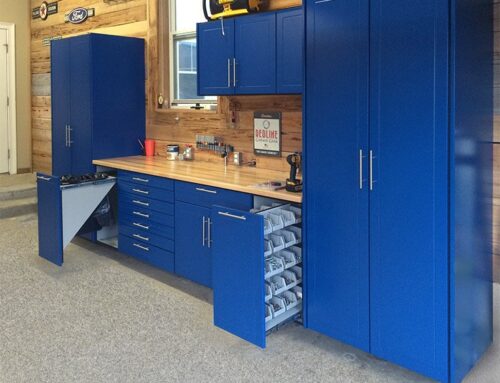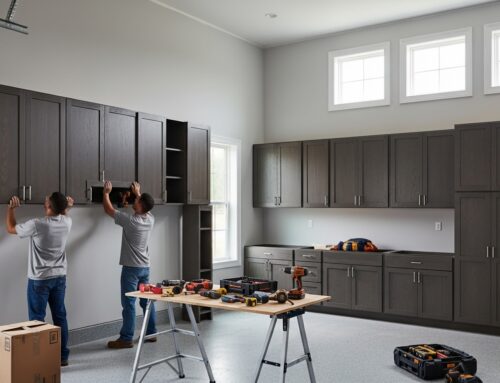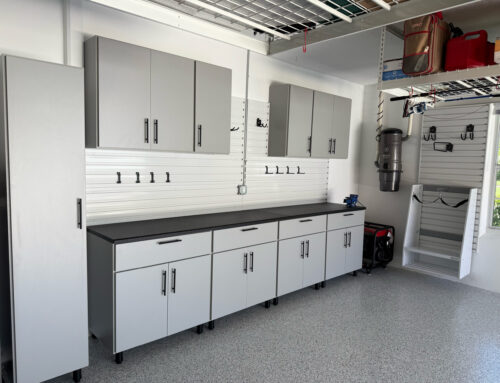Florida Summers Are Brutal on Garage Storage—Here’s How to Keep Your Cabinets in Top Shape
If you live in Florida, you already know—summers are hot, sticky, and full of moisture. And while we design our garage cabinets at Enhance Your Garage to hold up in humid conditions, that doesn’t mean they’re completely immune to wear over time.
Garage cabinets, just like any other part of your home, need a bit of maintenance to stay looking and functioning their best—especially during peak summer months in places like Cocoa Beach, Palm Bay, and Port St. Lucie.
In this guide, we’ll walk you through simple, effective steps to protect your cabinets from Florida’s extreme humidity and extend their lifespan for years to come.
1. Choose the Right Cabinet Materials From the Start
Before we dive into maintenance, it’s worth noting that not all garage cabinets are created equal. If your cabinets were built with untreated wood or low-grade particle board, they may warp or swell in high humidity—no matter how careful you are.
At Enhance Your Garage, we only install:
-
Powder-coated steel cabinets (corrosion-resistant)
-
PVC-laminate cabinets (moisture-resistant)
-
High-density melamine with sealed edges
If your current cabinets weren’t made with Florida in mind, it may be worth upgrading before humidity causes irreversible damage.
2. Keep the Garage Properly Ventilated
The #1 enemy of garage cabinetry in Florida? Trapped moisture. Whether it’s steamy mornings or leftover humidity after an afternoon thunderstorm, stale air in an unventilated garage can accelerate cabinet deterioration.
Simple ways to improve airflow:
-
Install a garage exhaust fan or dehumidifier
-
Open the garage door in the morning or evening when humidity is lower
-
Use ceiling or oscillating fans to circulate air
-
Avoid storing wet towels, pool gear, or gardening gloves inside cabinets
Pro Tip: Leave cabinet doors slightly ajar during particularly humid weeks to allow airflow and prevent mildew.
3. Wipe Down Surfaces Regularly
Dust and moisture can settle on cabinet surfaces—especially in coastal areas. A quick wipe-down once a week goes a long way in keeping your cabinets clean and dry.
Use:
-
A microfiber cloth
-
A mild soap-and-water solution (no bleach or ammonia)
-
Dry towels to remove excess moisture
Avoid abrasive cleaners that could scratch surfaces or wear away protective coatings.
4. Inspect for Signs of Mold or Mildew
If you see black spots, musty smells, or discoloration inside your cabinets—especially in corners or under shelving—it may be an early sign of mildew growth.
What to do:
-
Remove items and wipe the interior with white vinegar or diluted hydrogen peroxide
-
Allow the space to dry completely before replacing items
-
Consider adding moisture-absorbing products like DampRid or silica gel packs
Mold can spread quickly in warm, humid climates—early intervention is key.
5. Store Items Strategically
Humidity not only affects the cabinets themselves, but also what you store inside them. Some materials retain moisture and may cause condensation inside the cabinet.
Avoid storing:
-
Wet or damp pool towels
-
Open containers of pet food
-
Paint cans or solvents without proper sealing
Do store:
-
Tools and supplies in sealed bins or bags
-
Labelled plastic containers instead of cardboard boxes
-
Cleaning products and chemicals upright and tightly closed
6. Lubricate Hinges and Hardware
Humidity can cause metal cabinet hinges and handles to squeak, rust, or seize up. Once a season (especially in summer), apply a light lubricant like:
-
WD-40
-
Silicone spray
-
White lithium grease
This keeps doors operating smoothly and prevents hardware from corroding in the salty air.
7. Monitor for Warping or Swelling
Even with durable materials, long-term humidity exposure can cause panels or doors to bow or swell slightly. If you notice misaligned cabinet doors, it may be time to:
-
Tighten or adjust hardware
-
Recalibrate soft-close mechanisms
-
Contact a pro for evaluation if warping is significant
Our team can often adjust or replace individual panels rather than reinstalling the entire system.
8. Use a Garage Dehumidifier (Especially in Coastal Areas)
For homes near the ocean—like Melbourne Beach, Grant, or Cape Canaveral—moisture levels can be extreme. If your cabinets are exposed to damp air daily, a dedicated garage dehumidifier can make a huge difference.
Look for:
-
30–50 pint capacity
-
Auto shut-off
-
Built-in humidistat
Keeping your garage humidity under 60% significantly reduces the risk of moisture-related cabinet damage.
Final Thoughts
Your garage cabinets are designed to work hard—but even the best materials need a little upkeep, especially in Florida’s humid, salty summer air. With these simple maintenance steps, you can protect your investment, prevent damage, and keep your garage space looking sharp year-round.
Whether you’re storing tools, sports gear, or storm supplies, your cabinets should perform just as well in July as they do in January.
At Enhance Your Garage, we build storage systems that are made for Florida—and we’re here to help you maintain them for the long haul.
FAQs: Maintaining Garage Cabinets in Florida
1. What’s the best material for garage cabinets in humid climates?
Powder-coated steel, PVC laminate, and high-density melamine with sealed edges are all excellent for Florida homes.
2. How often should I clean my garage cabinets?
We recommend wiping them down at least once a week during summer, especially if your garage isn’t climate-controlled.
3. Do I need a dehumidifier in my garage?
If your garage is sealed and holds a lot of moisture—yes. It can significantly reduce humidity-related damage to cabinets and contents.
4. How do I prevent mildew inside cabinets?
Improve ventilation, avoid storing wet items, and use moisture absorbers like silica gel or DampRid.
5. Can I repaint or seal older wood cabinets to protect them?
Possibly. But if they’re already warping or rotting, upgrading to moisture-resistant cabinets is a better long-term solution.
6. Is it okay to store cleaning products or chemicals in garage cabinets?
Yes, but always store them upright, sealed, and ideally in lower cabinets with ventilation.







Leave A Comment